Are non-portable games systems doomed?
Radio went portable
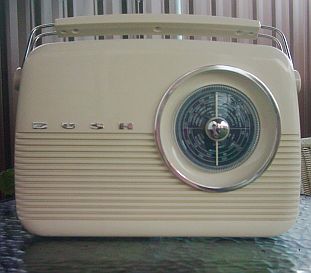
Meanwhile, elsewhere a quiet revolution was happening: thanks to the transistor, the first cheap portable radios started appearing in the 1950s and 1960s. They allowed people for the first time to listen to the radio anywhere, and as time went on their price dropped while their size and quality improved. Portable radios began to outnumber home radios, and eventually it even became the norm to use a portable radio at home. It got to the point where it became difficult to buy a separate radio that wasn't portable, and the standalone home-based radio was almost entirely wiped out.
Music is going portable
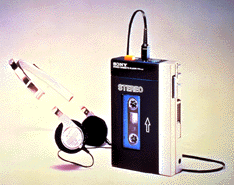 The home music system soldiered on however, as it still had the upper hand when it came to pre-recorded music. Although compact cassettes and portable players were invented in the 1960s, they weren't taken seriously as a music format due to low sound quality and bulky players. Everyone continued to buy vinyl records, and it seemed that home systems were destined to always be the way people listened to music.
The home music system soldiered on however, as it still had the upper hand when it came to pre-recorded music. Although compact cassettes and portable players were invented in the 1960s, they weren't taken seriously as a music format due to low sound quality and bulky players. Everyone continued to buy vinyl records, and it seemed that home systems were destined to always be the way people listened to music.
But cassettes weren't as feeble as they seemed. In 1979 a Japanese company called Sony decided to make a very slim portable stereo cassette player called the Walkman. It was rather successful. The fact that this brand is still used today, almost thirty years later, on Sony Ericsson's music phones is testament to just how much of an impact their portable stereo cassette player made on society. Recorded music instantly became something you took with you, just like radio, and home stereo systems started to be pushed to one side. When CD Walkmans appeared, portable sound quality ceased to be an issue, and Walkmans could easily be connected to external speakers if people tired of listening through headphones.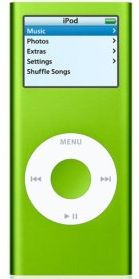 Home music systems still had one huge advantage over the Walkman however: most people's music collections, even on cassette, were far too bulky to take with them. If they wanted to listen to lots of music, they had to listen at home. This final advantage disappeared when the first high capacity MP3 players were released, most famously among them (although not actually first) was the iPod. These MP3 players could store thousands of music tracks on a portable Walkman-sized device, which was more than enough space for most people's CD collections.
Home music systems still had one huge advantage over the Walkman however: most people's music collections, even on cassette, were far too bulky to take with them. If they wanted to listen to lots of music, they had to listen at home. This final advantage disappeared when the first high capacity MP3 players were released, most famously among them (although not actually first) was the iPod. These MP3 players could store thousands of music tracks on a portable Walkman-sized device, which was more than enough space for most people's CD collections.
Many people continue to prefer the superior performance of a full-size home stereo system, but this is becoming less and less common. The mainstream audience for music is rapidly shifting away from home systems and towards portable music players, just as they switched to portable radios in the 1950s and 1960s. The connectivity on MP3 players allow people to easily listen to music with headphones on the move and through speakers when at home. Thanks to larger storage capacities and better compression techniques, music player sound quality is improving too. No doubt it will equal that of the Compact Disc at some point, which for most people is as good as sound needs to be.
Now we're starting to see music players and mass storage memory card slots even in relatively cheap $150 mobile phones, and it could be that one day all phones will include music player software and a card slot. Even people who don't want a portable music player will have one, and once it's there they'll be tempted to try it out.
In short, music has seen its ties to home systems severely weakened over the past thirty years. Non-portable music systems could well be wiped out one day, just as non-portable radios were.
Are video games going portable?
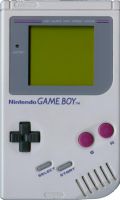 Like radio and music, games have their roots in devices intended for use entirely at home.
Like radio and music, games have their roots in devices intended for use entirely at home.
The first home computers and consoles had to be connected to television sets or monitors, and the idea of making gaming portable seemed ridiculous. Even when the first portable games consoles appeared, they were very primitive compared to home consoles and computers. The very first handheld console, the MB Microvision, appeared in 1979 and sported a 16x16 pixel monochrome screen, and even when the more advanced Game Boy and Atari Lynx handhelds appeared ten years later, they still seemed generations behind their home equivalents. The Game Boy found itself a very profitable niche, which made everyone realise that there was a place for portable gaming, but it was still just a niche and not any kind of threat to the home console.
As time went on, portable games improved technically but its image as an inferior side-product remained largely unchanged. Handheld consoles routinely received portable remakes of home console games that were 5 or 10 years old, like hand-me-down clothes left to a younger sibling. Relatively few original portable games were made, and even the legendary Game Boy title Tetris was originally written and released many years earlier for home consoles and computers.
But, as seen with radio and music, the dominance of the home gaming system is by no means guaranteed.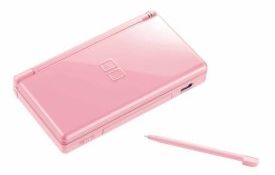 The best-selling portable games in recent years have increasingly not been hand-me-downs from home gaming systems, but completely original titles designed and written especially for portable devices. For example, pet simulator Nintendogs and logic puzzle game Brain Training sold millions at their launch, and continue to sell well almost two years later. The only way to play these games is on a portable device, there are no home versions of them despite their immense popularity.
The best-selling portable games in recent years have increasingly not been hand-me-downs from home gaming systems, but completely original titles designed and written especially for portable devices. For example, pet simulator Nintendogs and logic puzzle game Brain Training sold millions at their launch, and continue to sell well almost two years later. The only way to play these games is on a portable device, there are no home versions of them despite their immense popularity.
For the last year or two, the Japanese games charts have been completely dominated by the Nintendo DS handheld console. This week's Japanese Top 50 is an utterly typical example: it contains six PlayStation 2 games, three Nintendo Wii games, three PlayStation 3 games, one Xbox 360 game, one PlayStation Portable game, and an incredible thirty-six Nintendo DS titles, five of which are in the top ten.
Screen Test
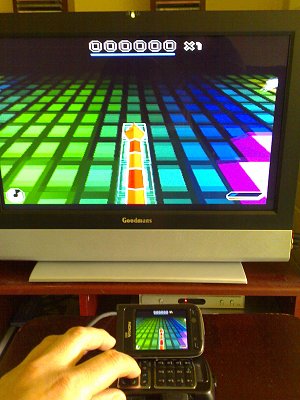 The biggest advantage of a home gaming system is of course the ability to play on a large screen, and it's often held up as the starkest difference between a handheld and a home gaming system. However, this barrier between portable and large screen games systems is crumbling fast.
The biggest advantage of a home gaming system is of course the ability to play on a large screen, and it's often held up as the starkest difference between a handheld and a home gaming system. However, this barrier between portable and large screen games systems is crumbling fast.
There are now an increasing number of games-capable portable devices which can be connected to a television or monitor. The Nokia N93 and N95 smartphones are strongly rumoured to be some of the compatible models on Nokia's upcoming Next Gen Gaming platform, and you can already use their TV Out sockets with existing S60 games such as System Rush Evolution (click here for a video) and Snakes (click here for a video).
The resolution of portable devices, at the moment typically 320 x 240, is of course much lower than you'd see on a cutting edge home games system, but the gap is narrowing. If portable resolutions become the same as Standard Definition (852 x 480) and High Definition (1920 x 1080) televisions, the gap will have disappeared altogether. These might seem ridiculously high resolutions for a handheld device, but there are already portable devices close to standard definition (the Nokia N800 has a resolution of 800 x 480, about the same as a standard widescreen TV) and it seems certain that handheld devices will catch up with high definition TVs over the next few years.
Complexity Complex
The second supposedly unchangeable advantage of home gaming over portable gaming is the complexity of games, especially their graphics. Home gaming systems will always have more computing power, and therefore better graphics, so the theory goes that portable gaming devices can never replace home systems.
But do most people actually want better graphics above all else?
Nintendo's Brain Training is a series of mental tasks aimed at people who want to give their grey matter a quick workout every now and then. It's outsold virtually all other video games over the last two years, and continues to be a huge worldwide hit. A quick look at Amazon UK's charts shows it's still at number 9, outselling both the Nintendo Wii and PlayStation 3 consoles. Games don't get any more successful than this.
Brain Training features graphics that look like this:

It's also interesting that the games system with the best graphics is almost never the games system with the biggest sales. The Atari 2600, Nintendo NES, Sony PlayStation, PlayStation 2 and Nintendo Game Boy were all overwhelmingly the best-selling consoles of their respective generations, yet none of them had the best graphics. This paradox has become even more stark with the latest batch of games consoles: the best-selling console of the moment is the Nintendo Wii, which Nintendo openly admit is technologically a generation behind its rivals the Xbox 360 and Sony PlayStation 3. If this trend continues, it seems to imply that most gamers are willing to stay a generation behind in terms of graphics simply because they like the games that the Wii has to offer.
In short, graphics are not the be all and end all that some technology enthusiasts would have you believe, in fact they've never been the decisive factor in the "console wars".
It's worth noting that improvements in graphics have become more and more incremental over the past 10 years, the difference in graphics between console generations is becoming far less noticeable.
Indeed, graphics technology may reach a point where the average person just doesn't need it to get any better. No successful audio product has ever managed to improve on the Compact Disc's sound quality because the CD already sounds good enough for most people, and a similar plateau might be reached by game graphics.
Portable Libraries
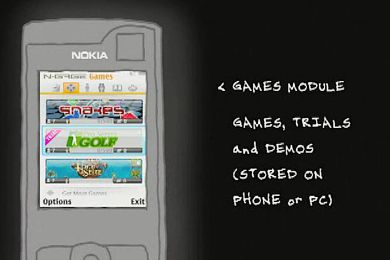 Like home music systems, home gaming systems can claim a third advantage over portables: games collections, even portable ones, have always been too bulky to take with you everywhere, so if you fancy a really solid evening's gaming you're best off staying at home where your game discs and cartridges are easily accessible.
Like home music systems, home gaming systems can claim a third advantage over portables: games collections, even portable ones, have always been too bulky to take with you everywhere, so if you fancy a really solid evening's gaming you're best off staying at home where your game discs and cartridges are easily accessible.
But this doesn't have to be true any more. Smartphones can store hundreds of games on a single memory card, and download more over their mobile internet connection if required. Even handheld consoles like the Nintendo DS can store many games on a single card, albeit unofficially in the form of pirated games on a blank memory card.
Nokia is openly embracing this approach with their Next Gen gaming platform, which will run entirely on a games download system that lets you download and store titles on the phone's memory card, or download them through the phone's internet connection. There will be no cartridges of any kind to carry with you on the Next Gen platform, everything game related will be accessible on the handset itself.
What MP3 players did for music could be about to happen for gaming: people will no longer have to play games one at a time selected from a shelf, but will see a multitude of titles stored on the device itself. Just as handheld music players are portable music libraries, handheld gaming devices will become portable games libraries.
Gaining Control
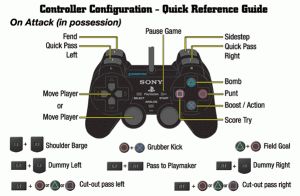 "Aha!", we hear the hardcore gamers say, "But what about the controllers? Home console controllers are always better for gaming because they can incorporate far more buttons and joysticks than portable devices."
"Aha!", we hear the hardcore gamers say, "But what about the controllers? Home console controllers are always better for gaming because they can incorporate far more buttons and joysticks than portable devices."
Well, it's another case of a statement being true some time ago, but no longer true today. The current trend isn't towards complexity in gaming controllers, it's towards simplicity, the kind of simplicity which is easily reproduced on a portable device.
The best-selling handheld at the moment is the Nintendo DS, and most of its best-selling games are controlled by nothing more than a stylus. It's so simple that DS games could be reproduced almost exactly on any high resolution touchscreen device, no gaming-oriented design features are required at all for something like Animal Crossing or Nintendogs. (In theory the DS's second screen would make these ports difficult, but in practice the second screen is barely used for anything other than status screens.)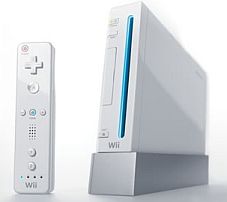 The best-selling home console at the moment is the Nintendo Wii, and all of its games are controlled by a bluetooth wand, with the console detecting the wand's position and orientation as you wave it. Some Wii titles do require an additional joystick to be attached to the wand, but even then it's still a simple setup compared to a more traditional controller (for example, each PlayStation 2 controller has two analogue joysticks, a direction pad, four shoulder buttons and four normal buttons, all of which may be required in a single game).
The best-selling home console at the moment is the Nintendo Wii, and all of its games are controlled by a bluetooth wand, with the console detecting the wand's position and orientation as you wave it. Some Wii titles do require an additional joystick to be attached to the wand, but even then it's still a simple setup compared to a more traditional controller (for example, each PlayStation 2 controller has two analogue joysticks, a direction pad, four shoulder buttons and four normal buttons, all of which may be required in a single game).
A combination of stlyus controls on the move and motion controls at home could allow a portable device to rival home consoles: games would be stylus-based when being played on the small screen, and handheld pointer-based when being played on a television screen (this may require an external sensor, but you could leave one permanently by your TV). In other words, the portable device could be controlled somewhat like the Wii at home, and exactly like the DS on the move.
In fact the ingredients for this combination are already with us:
- PDAs and smartphones have had stylus controls for years now, in fact they were the inspiration for the DS in the first place.
- Many popular smartphone models such as the Nokia 5500 and Nokia N95 are starting to have motion and orientation sensing technology built into them.
- Bluetooth is so common that almost every portable computing device uses it.
There's actually nothing at all high tech or complicated about the DS or Wii, they're just novel and elegant uses of cheap existing technologies, which means portable devices such as smartphones could plausibly adopt similar control methods.
The Phone Factor
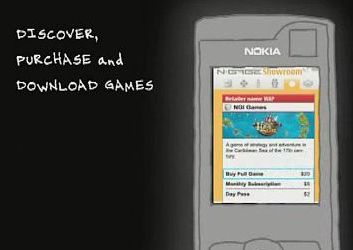 Perhaps the worst news for home games systems is that there's another important factor working against them, one which neither radio nor music had to deal with when they were forced to go portable: the mobile phone. Most people around the globe have one or want one, something unique in the electronics world.
Perhaps the worst news for home games systems is that there's another important factor working against them, one which neither radio nor music had to deal with when they were forced to go portable: the mobile phone. Most people around the globe have one or want one, something unique in the electronics world.
The phone's best-known claim to fame in the gaming world is Snake. Every gamer has played it because it was (and still is) embedded on a wide range of Nokia and other handsets. Most significantly though, an awful lot of non-gamers have played Snake, and here's the reason why: they bought the phone for calls and discovered that the games were a nice extra. These people would never ever buy a standalone gaming device, but don't mind exploring the mobile phone's ever-increasing range of features including games.
Added together, home games consoles sell about 25 million units worldwide in a year. That's about the same as the amount of mobile phones sold worldwide in just one week. The vast majority of phone users never really play games, but if just three percent of them opt for a phone with a particular gaming platform, that would give the platform a bigger user base than all home and portable games consoles put together.
What will happen?
Home radios and home music systems took decades to be edged out by portables, but unlike radio and music, home gaming systems are under attack from two fronts: handheld consoles and mobile phones.
The handheld console is already beating the home console in Japan, the third largest gaming market in the world and, more significantly, host to home console giants Sony and Nintendo. The threat to home consoles from portable systems is now being taken more seriously than ever before.
Phone gaming is probably already bigger than home console gaming in terms of the sheer number of players, but it suffers from a splintered market due to a wide range of proprietary hardware and software platforms. Phone gaming also suffers from a lack of quality control by software distributors. If a more unified gaming platform with a strong quality control regime became widely available, it could pose a real threat to both handheld consoles and home gaming systems. This is of course what Nokia intends to do with its Next Gen gaming platform, launching this September. If Nokia is successful, we will no doubt see more platforms like it from rival phone makers.
Hardcore fans of gaming, just like hardcore fans of radio and music, will always prefer large home-based devices as they will always offer a superior experience. For people who want the best, home devices have been and will be the way to go.
But the mainstream market has never been about having the best. The mainstream market has always been about devices becoming "good enough", the point at which further improvements seem pointless to most people. When portable devices reach this "good enough" point, home devices bite the dust. It's happened to radio, it's happening to music and it could well happen to games too.
Krisse, AllAboutSymbian, 10 April 2007
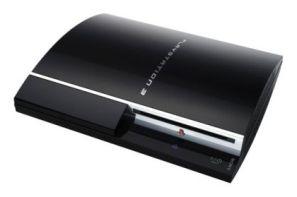
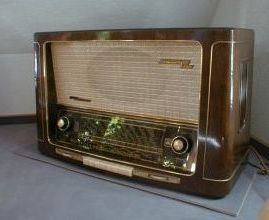
An example of a non-portable games console, and an example of a non-portable radio
